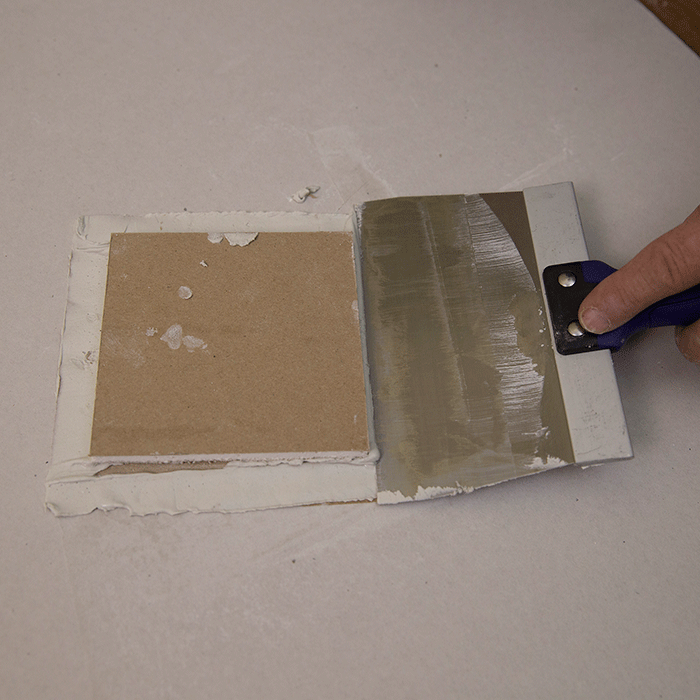Last week Stuart covered some of the new tools Ryobi is introducing in 2016 One of these products is a new drywall repair kit that aims to make fixing holes smaller than 4″ in diameter a much simpler process. The best way to attach the replacement piece will depend on its size and whether or not there are wall studs backing it. Once the replacement piece is securely fastened, blending in the surface so the repair is not noticeable usually requires three applications of drywall joint compound.
Use metal snips to cut a section of new corner bead to fit the repair area (image 3). Apply a coat of joint compound to the corner, set the bead in place then apply another layer of joint compound over it. Let dry completely then add another layer or two of compound depending on what is needed (image 4).
Drywall repair is not something most people look forward to. Although it’s relatively straightforward in theory, if you have ever done it then you know that the dry time of the mud and all the dust created by sanding can turn the task into a big hassle.
Then there are two ways to fix nail pops: use a screwdriver or hammer to drive the nail back into the studs (image 1), then bracket each nail head with closely spaced drywall screws (image 2); or, remove the nail and drive a screw in its place, along with a second screw nearby, to re-secure the drywall to the stud.
Then simply use the removed section of wall to repair the opening when your work is complete. If you use a utility knife, you will need to score repeatedly along a straightedge to cut all the way through the drywall. Begin a repair to a severely damaged outside corner by cutting away the metal corner bead with a hacksaw.
